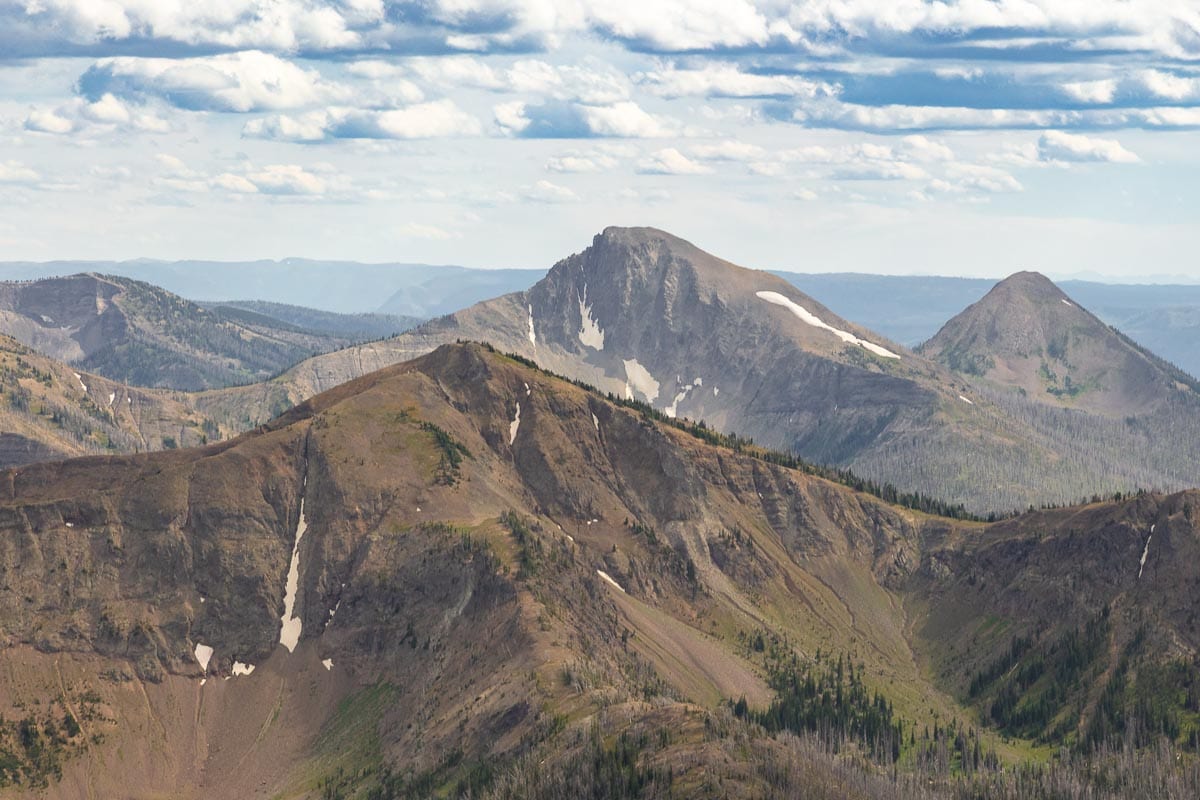This news story about the renaming of Mount Doane in Yellowstone National Park to First Peoples Mountain is based on a June 9, 2022, National Park Service press release. You can read the original release here.
A prominent mountain in Yellowstone National Park will from now on be known as First Peoples Mountain, the park announced on Thursday, June 9, 2022.
Previously known as Mount Doane, the mountain was renamed to “remove [an] offensive name from America’s first national park,” the National Park Service said.
This article about the renaming of Mount Doane to First Peoples Mountain in Yellowstone contains affiliate links. You can read more about our Terms of Use / Disclosure here.
Yellowstone’s Mount Doane Renamed to First Peoples Mountain
The renaming comes after a 15-0 vote affirming the change by the U.S. Board on Geographic Names (BGN). The BGN is the federal body responsible for maintaining uniform geographic name usage throughout the federal government.
A 10,551-foot peak in Yellowstone National Park‘s Absaroka Range, First Peoples Mountain is in the park’s southeastern part, to the east of sprawling Yellowstone Lake.

Before its renaming to First Peoples Mountain, the mountain’s namesake was Gustavus Doane, who was a “key member of the Washburn-Langford-Doane expedition in 1870 prior to Yellowstone becoming America’s first national park,” according to the Park Service.
However, research shows that earlier in 1870, Doane had led an attack on a band of Piegan Blackfeet. This attack was a response to the alleged murder of Malcolm Clarke, a white fur trader.
That attack, now known as the Marias Massacre, resulted in the death of 173 Native Americans. Among the dead were numerous elderly Tribal members, women and children suffering from smallpox.
Afterward, Doane remembered and wrote about the attack fondly. For the rest of his life, he would brag about his role in the massacre.
During his later career in the U.S. Army, he also participated in a number of other campaigns against Native Americans.
For example, he and his troop of Crow scouts recovered the remains of George Armstrong Custer in 1877, a year after the Battle of the Little Bighorn.
Additionally, later that year, Doane and his Crow scouts were instrumental in the capture of Chief Joseph and the Nez Perce, blocking their retreat at the Yellowstone River. He also participated in the campaign against Geronimo in Arizona in 1886.
Now, Doane’s name is erased from the natural landscape in Yellowstone National Park, although his legacy continues to live on in the national park itself, which he helped explore and establish.
You can learn more about the life of Gustavus Doane in this book.
Years-Long Efforts to Rename Mount Doane to First Peoples Mountain Come to Fruition
For several years, various Native American groups have proposed renaming Mount Doane to First Peoples Mountain.
They’ve said, with some undeniable justification, that Gustavus Doane should not be honored because of his role in the massacre of hundreds of Native American people.
Based on recommendations from the Rocky Mountain Tribal Council, subsequent votes within the Wyoming Board of Geographic names, and with support of the National Park Service, the name was forwarded to the BGN for a vote in June 2022.
The Mount Doane name change will be reflected in The Domestic Names Geographic Names Information System (GNIS) in the coming days, where the peak will now be registered as First Peoples Mountain.
In the past several months before the renaming, Yellowstone National Park reached out to all 27 associated Tribes. None opposed or were concerned about the name change.
The National Park Service also said that Yellowstone may consider changes to other derogatory or inappropriate names in the future.
